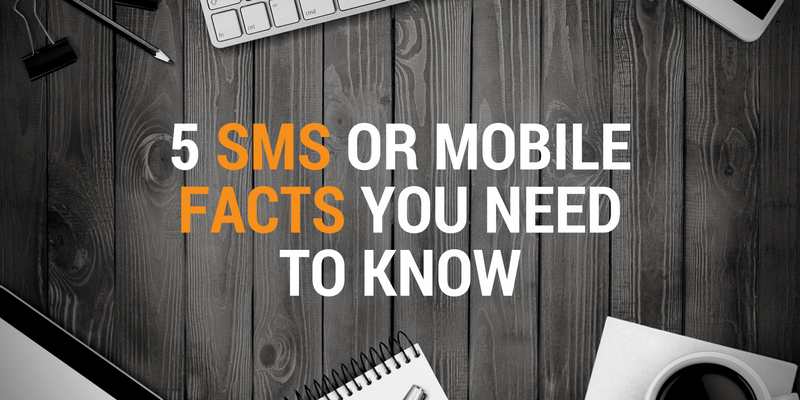3 More Reasons to Use SMS Marketing This Year

Are you still holding out on using SMS marketing for your business?
If so, the “usual” statistics that get thrown around obviously aren’t going to help you decide to start now. But what about something that will convince you of the value of it? Especially the long-term value it has for you and your customers? Sound interesting?
There are three excellent reasons to use SMS marketing that go deeper than just open, read or click through rates. Together they paint a picture of why SMS is a critical part of any mobile marketing plan. Let’s look at them one by one.
1. People Prefer SMS
Multiple surveys show the number of people who prefer SMS for brand communications is growing every year. Because people prefer it, it is quickly becoming a crucial part of any brand’s efforts to enhance the customer journey.
SMS supports communication at various stages of a purchase, including order and shipping confirmations, status updates, and account enquiries. That allows brands to maintain a connection that is seen as reliable, convenient and consistent (if done correctly) by the customer. That fosters good feelings towards the brand.
And it offers the opportunity for businesses to keep track of that customer in a way not possible with apps. Too much reliance on app-related marketing can actually make it difficult to maintain a connection with a single customer. Today a customer may be on WhatsApp, then SnapChat, then the next popular thing, then back to Facebook Messenger. Which leads to the next reason to use SMS.
2. SMS Provides Stability
It’s hard to effectively use mobile marketing when your user base is unstable. But that’s exactly what happens when you try and leverage the latest popular app, and then the next and the next (because no one stays on the top for too long).
The truth is people stop using apps, or even delete them, on a regular basis. For the “average” app, one estimate is that 77% of people stop using it within three days. That statistic is probably too aggressive when talking about a new popular app that takes hold, but still most of them eventually decline.
This is where SMS marketing shines. Most people keep their mobile number for years. Even when they switch phones or carriers they take their number with them. So, once they are on your list, you have a direct connection to them for as long as they choose (until they opt out).
The relationship you build with them using SMS stays with both of you. You don’t have to bother trying to get them to connect with you again on a different platform, you just keep sending SMS messages.
3. SMS Saves You Time and Effort
Marketing can be exhausting. I think that’s particularly true in mobile marketing. Trying to keep up with the latest social networking or instant messaging apps is time-consuming. And often it’s hard to know whether or not your effort and money is being spent wisely.
New platforms require new training, new processes, and lead time. When you use SMS marketing though, you know what it is. You may vary the content, timing, or list management but the channel itself isn’t going to change – at least not quickly.
It is also easy to measure your success and calculate ROI with SMS. And with SMS you have low, fixed costs per message sent.
Now, I’m not saying you shouldn’t try out marketing in new platforms and apps. There is no one-size-fits-all in mobile marketing. But when you include SMS in your mix of channels, it can be the foundation you use for “guaranteed” ROI while you experiment with other options.
Related Articles
SMS Marketing – 4 of the UK’s Best Ever Campaigns
Discover how to come up with an SMS marketing campaign in this article which looks under the surface of some of the UK's most successful ever SMS marketing campaigns. Whether you are looking to boost revenue, improve customer satisfaction or help your brand stand out with a unique and memorable promotion, this article shows how a simple approach to SMS messaging can work wonders for your company.
5 SMS or Mobile Facts You Need to Know
So many of us are used to having our mobiles around nearly 24 hours a day that it’s easy to forget it’s still a growing industry. And though SMS has been around for over two decades, the ways we use it and people’s willingness to use it continues to grow. So for this blog I picked out five facts about mobile and SMS that really make the case that SMS for business has come of age. Let’s see if you agree.
5 Things To Consider Before Launching Your First Text Marketing Campaign
SMS is well established as a successful marketing channel - however that doesn't mean you should just dive in head first. Here's five things you should consider before launching your first SMS marketing campaign.
The Second Most Important Rule of SMS Marketing
Text message marketing works because it is short, quick, personal, and immediate. You don't want to annoy the people you're reaching out to. If you're running an opt-in campaign, or a contest, keep the process to as few steps as possible.
5 Top Converting Power Words for SMS Marketing
Essential SMS Marketing Ideas for Toy Retailers
9 Phrases to Add Some Winter Wonder to Your SMS Marketing Campaign
5 Ways to Put the Spring Back into Your SMS Marketing
6 Tips To Help You Get The Most From SMS Marketing
What are the dos and don’ts of SMS marketing? How can you get the most from your business text messaging? We’ve put together six actionable tips to help you get the best from your SMS marketing campaigns.












